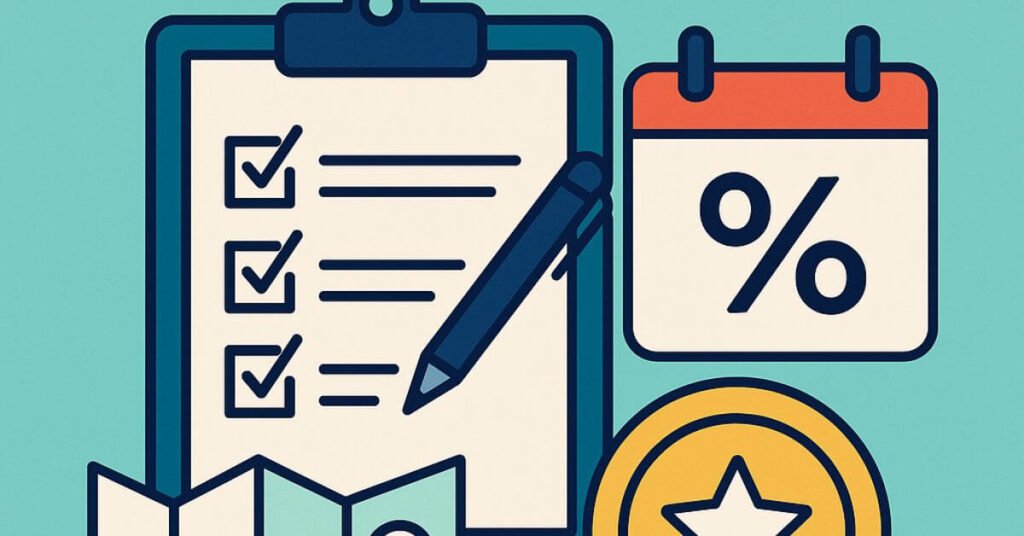Promotions are powerful, but they’re even more effective when part of a planned strategy. The biggest mistake most people make with loyalty programs is being reactive — only transferring points or booking flights when they see a promotion. But the travelers who truly maximize their rewards are the ones who build a points strategy around major promotions before they even begin.
This guide will teach you exactly how to plan a points strategy around major promotions, so you’re always ready to act, optimize value, and travel more for less — all without surprises.
Why You Need a Strategy
Points and miles are like a currency — and like any currency, their value fluctuates. If you act randomly or without a plan, you risk:
- Transferring points during low bonus periods
- Missing the best redemption windows
- Letting miles expire
- Booking under pressure at poor rates
- Losing access to exclusive club or tiered promos
But with a structured strategy, you can:
- Know when to earn, when to transfer, and when to redeem
- Keep accounts ready and active
- Multiply the value of each point
- Stay ahead of other travelers competing for the same redemptions
Step-by-Step: How to Build a Strategy Around Promotions
Step 1: Identify Your Travel Goals for the Year
Before even thinking about points, define:
- How many trips you plan to take
- Where you want to go
- What cabin class you aim for (economy, premium, business)
- Your flexibility with dates and destinations
This clarity allows you to pursue promotions that match your goals — not just chase big numbers with no use.
Example:
- “Trip to Europe in October, ideally in business class”
- “Visit parents in December, flexible with dates”
Now, every promotion you consider must serve one of these plans.
Step 2: Track the Promotional Calendar
Most major loyalty programs follow seasonal patterns. Promotions may vary in type and percentage, but the months are often consistent.
Typical High-Promo Seasons:
- January–February: New year promotions, elite status resets
- April–May: Mother’s Day, early year booster promos
- July: Mid-year bonus campaigns
- November (Black Friday/Cyber Monday): Highest bonuses and biggest award discounts
- December: End-of-year redemptions and club upgrades
Log these dates in a Google Calendar or spreadsheet, and add reminders 5–10 days before each month begins.
Step 3: Choose Your Core Loyalty Programs
Don’t spread yourself too thin. Select 2–3 airline and point platforms to focus on — ideally ones that:
- Match your preferred destinations
- Offer good promos throughout the year
- Partner with your bank or card programs
- Have reasonable redemption value
Example combo for a Brazilian user:
- Smiles (wide partner network + frequent promos)
- LATAM Pass (great for South America)
- Livelo or Esfera (flexible transfer options)
Step 4: Build Up Points Strategically
Promotions are only useful if you have points available to use.
Focus your daily spending and subscriptions around your preferred platforms:
- Use co-branded or transfer-eligible credit cards
- Engage in partner promotions (hotels, shopping, gas, food delivery)
- Subscribe to point clubs (Clube Smiles, Clube LATAM, etc.)
- Take advantage of welcome bonuses and referrals
Aim to build a healthy point balance before each expected promo window.
Step 5: Track Transfer Bonuses from Your Bank
Most bank-to-airline transfer promotions repeat in cycles. Start logging:
- Which airline received a bonus
- Bonus % (e.g., 60%, 80%, 100%)
- Date range
- Was it public or targeted?
- Did it require club membership?
Over time, this helps you predict when the next bonus is likely — and avoid transferring when no promo is active.
Step 6: Set Goals for Club Subscriptions
Many loyalty clubs offer exclusive or enhanced promotions — but they come with a monthly fee.
Make these decisions part of your strategy, not impulses.
Track:
- When your club membership started
- How many bonus miles it gave you
- Exclusive promos you used (versus general public offers)
- If the subscription is still paying off
Consider upgrading tiers only if the math shows a clear return.
Tools to Help You Stay Organized
1. Google Sheets (Points Strategy Tracker)
Create tabs for:
- Travel goals
- Promo calendar
- Points balances by program
- Past promotions used
- Transfer bonus logs
- Loyalty club status
2. AwardWallet
Sync your loyalty accounts and monitor expirations, point totals, and recent transactions.
3. Google Calendar Alerts
Set alerts for:
- Promotion start/end dates
- Award ticket booking deadlines
- Points expiration dates
- Status requalification timelines
4. Telegram and Blog Alerts
Follow trusted sources like:
- Passageiro de Primeira
- Melhores Destinos
- The Points Guy
- LoyaltyLobby
- Promoções de Milhas (Telegram)
These communities help confirm when a promotion is live and whether it’s worth acting on.
Smart Redemption Strategies Based on Promotion Types
When You See a Transfer Bonus
✅ Action: Transfer only if you’ve confirmed award space
❌ Don’t transfer speculatively “just in case”
Always match transfer bonuses with booking windows and redemption goals.
When You See an Award Sale (e.g., 30% fewer miles)
✅ Action: Book immediately if it matches one of your defined goals
❌ Don’t book just because “it’s cheap” — miles are still a currency
Award sales are perfect for domestic, off-peak, or last-minute travel.
When You See a Flash Sale
✅ Action: Be flexible with dates and be ready to act fast
❌ Don’t transfer points unless the deal is confirmed
Flash sales are ideal for low-mileage economy trips and are great for spontaneous plans.
When You See Club Subscription Promos
✅ Action: Evaluate value over time, not just upfront bonus
❌ Don’t subscribe if you won’t benefit from long-term perks
Consider annual plans only if you’ll use the full benefits — not just the welcome miles.
Real-World Example: Strategic Planning for Maximum Return
Rafael planned to fly to Europe in business class in October.
His plan:
- From January to June: collected 70,000 Livelo points
- Watched promo calendar → Expected TAP 100% bonus in July
- Confirmed award space via TAP Miles&Go for his dates
- Transferred points during promo → got 140,000 miles
- Booked flight that usually costs $2,800
- Paid $120 in taxes
Total cost: 70,000 points + $120
Redemption value: 4 cents per point
Savings: Over $2,600 — all because of planned timing
Final Thoughts: Strategy Turns Points Into Power
Random redemptions give random value. Strategic redemptions give freedom, upgrades, and thousands of dollars in real savings.
By learning how to plan a points strategy around major promotions, you’ll always be ready to move when the right deal comes — not scrambling at the last minute.
Start with your goals. Track the trends. And let promotions serve your plan — not the other way around.
Elaine A. da Silva is a Brazilian travel and finance enthusiast, best known as the creator of the blog Dica das Milhas. With a strong background in personal finance and a passion for exploring smart travel strategies, she specializes in simplifying the world of airline miles and travel rewards for everyday people. Through her blog, Elaine shares practical tips, insider knowledge, and step-by-step guides to help readers save money and travel more efficiently using loyalty programs and credit card points.







